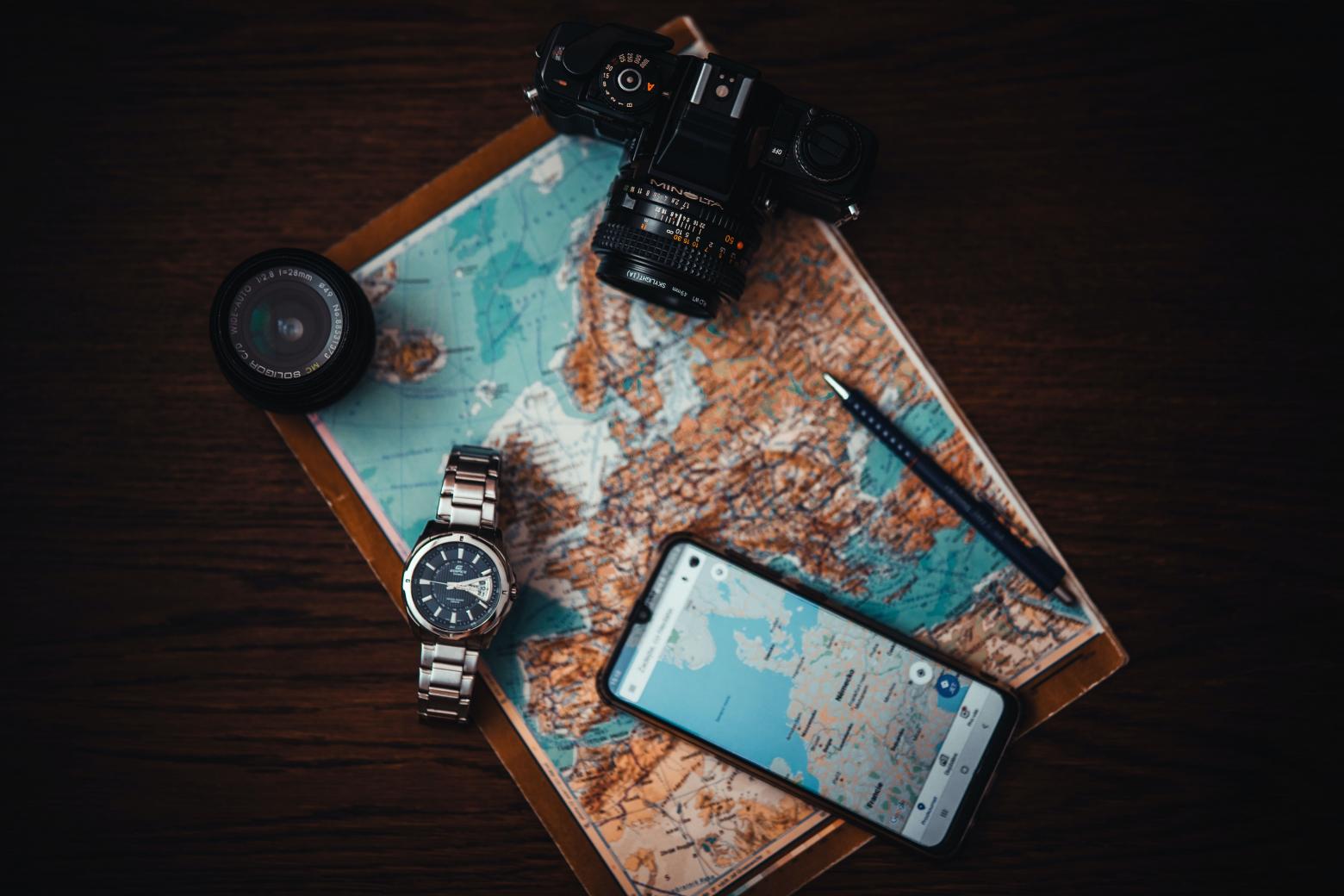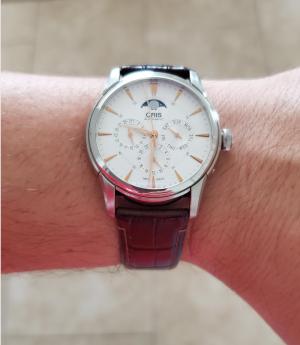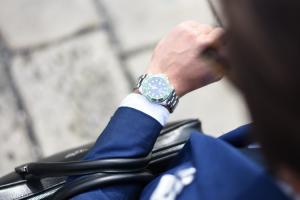6 Watch Photography Tips to Show Off Your Grail

Excellent watch photography makes browsing through watch blogs and forums a lot more fun. And maybe someday, when you achieve your grail, it will be your turn to post pictures. To make sure that you’re highlighting the best parts of your watch, here are a few watch photography tips and tricks to get you started!
Tips for Photographing your Watches
1. Think of a Theme
Before clicking that shutter button, one of the first things to do is to think of a mood or theme for your whole setup. It is also important to match that theme to the type of timepiece that you’re shooting. For instance, a racing theme will not fit a dress watch. On the other hand, a futuristic-looking watch will look out of place in a noir setting.
Here are a couple of things you can do to elevate your theme:
-
Props can go a long way

If you think that the photo looks bare, you can add props to the equation. You can literally use anything as long as it fits your theme. Try to be resourceful and let your creative juices flow. As an example, you can place your leather wallet near a dress watch that has a leather strap. To add, you can place an Oris Divers watch on top of a diving suit or a Rolex Pepsi beside a can of Pepsi.
-
Take advantage of post-processing

Using filters can alter the mood of the photo and it’s important to choose the right one that will match your theme. For instance, a Bauhaus watch like the Nomos Tangente will look best with the exposure dialled up to bring focus to the colourful accents. Meanwhile, a vintage watch will fit a moody and warm filter. Maybe even add some grain to make it look more vintage.
-
Mind your colour scheme

Another important thing to note about your theme is the colour scheme. Does your background match the hue of your watch’s dial? Double-check if some of your props clash with your watch. If you’re unsure about mixing colours, you can always review the colour wheel or maybe even search the Internet for interesting colour combination ideas. This picture above is a good combination of mixing teal with black and cream.
2. Clean your Watch
Becoming great in watch photography means you have to mind the smallest of details. And one thing that many people forget to do is to clean their watches before taking a picture of them. Believe me, a fingerprint on your dial can ruin the whole photo.
To clean it, you can use a lint-free cloth or even a chamois cloth. Make sure all of the fingerprints and smudges are removed from the crystal.
3. Adjust the Hands

Picture this: you already got the perfect lighting and composition. You’ve already edited the picture to set the mood. But there’s one problem: the watch’s hands are covering the logo! Many photographers overlook small details that could ruin your almost-perfect shot.
If you’re observant, you might have noticed that all watches from Rolex are set to 10:10 in posters. To be more specific, they even set the seconds hand to 31. But why 10:10:31 specifically? According to some folks, the hour and minute hands create a frame for the logo, making it stand out. Furthermore, they do not cover the date window and sub-dials.
It’s not just Rolex. Other brands like Omega, TAG Heuer, and Ulysse Nardin use the 10:10 method. Although they are not as specific as setting the seconds hand to 31. This might sound so simple but it does great wonders for your journey in watch photography. So, before clicking that shutter button, we would suggest adjusting the hands to 10:10.
4. Learn about Composition
-
Follow the rule of thirds

The rule of thirds is one of the first things you should learn about photography, not only in watch photography but also in other art media. A simple way to explain this rule is to divide your shot into nine equal sections separated by two vertical lines and two horizontal lines. The rule of thumb is to place your most important element in one of the points where the lines meet. This is to make your photo more balanced and to give the viewer a natural way of viewing the image.
-
Don’t mind the negative space
Newbies in watch photography often make the mistake of thinking that having too much negative space is bad. To the unacquainted, negative space is the empty area around your subject. Despite its name, negative space can be used to your advantage. All the negative space will force your viewer’s eyes to the main subject. So, if you want viewers to focus only on your watch, you can make use of negative space.
-
Look for leading lines
Veterans in watch photography or art, in general, have a knack for drawing your eyes to the subject. To achieve this as a beginner, you have to look for leading lines that will point to your subject. These lines can be anything from watch straps to buildings. Arrange your composition such that these lines lead toward your watch.
-
Focus on the right parts

One more thing to watch out for is blurring some parts of your photos especially if you’re using a lens with a wide aperture. But don’t get me wrong, having a blurred part is not all bad. In fact, you can use this to make your photos more interesting by focusing on the most interesting part of your watch. As an example, if you want to highlight your watch’s cyclops, you can focus on it and give the background a bit of blur.
-
Look for patterns and symmetry
The more you practice watch photography, the more you’ll notice that we’re often surrounded by patterns and symmetry. That said, both sides of your image should hold equal weight. An easy way to find out if your image is symmetrical is by splitting your photo down the middle. Do the sides look like they both have the same number of elements?
Using this technique will give the viewer the impression that all of the elements in the image work in harmony, thus leading to a striking image. For example, if you’re trying to photograph six watches in a flat lay, you can arrange them in a way that there are three watches on the left and three watches on the right.
5. Get Proper Lighting
As the saying goes, photography is like painting with light. That said, getting proper lighting is important especially in watch photography and even jewellery photography, as much of their parts are reflective. Many people will find that photographing watches up close is difficult due to the glare. To minimise reflection, here are some things that you can do:
-
Use a softbox

When using a flash, it is not a good idea to point it directly to the watch. The flash is too harsh and creates distracting shadows and glares. To combat this, you can use a softbox to diffuse the light of your flash. This will prevent light-spill and will produce a softer light.
There are a lot of available types of softboxes, from dirt cheap to mind-blowingly expensive. Furthermore, there are softboxes made for studios, while some are made to be portable. Choose one that best fits your lifestyle and budget. If you’re mostly doing jewellery or watch photography, investing in a softbox is a great idea.
-
Bounce back the light

If you don’t want to use a softbox, you can do the bounce flash technique instead. This is useful not only in watch photography but in portrait photography as well. Doing this is simple and does not require you to use any tools apart from your flashgun. All you have to do is to point your flashgun to a wall or any surface near your subject. This will allow the light to “bounce off” the surface and soften before it hits your subject.
-
Consider using natural light
If you’re not a fan of using studio lights, your best bet is to borrow light from the sun. There is a term called “golden hour” in watch photography where the sun gives off the best type of lighting for your images. A general rule of thumb is during the first hour after sunrise and the last hour before sunset.
While you’re outside, you can also use a few interesting backgrounds and elements for your photo. For instance, you can picture your watch on top of autumn leaves or even use buildings as background.
6. Use a Tripod to Capture the Watch’s Lume

In watch photography blogs, you will often see people showing off their watch’s lume. If your watch gives off an attractive lume, then you might want to follow suit. But to do this, you have to set a slow shutter speed. And unless you have superpower hands that can stay still for minutes, you’re going to need a tripod. This is to keep your image clear and not blurry.
Oh, and don’t forget to charge your watch’s lume! Exposing them to direct sunlight for a few minutes will do the trick.
Final Notes
Becoming an expert in watch photography is no easy task. But if you follow these tips and tricks, you’ll get a better understanding of watch photography and photography in general. Now, go and practice those shots!
If you’re looking for an attractive watch to photograph, check out these photogenic Pepsi watches!


